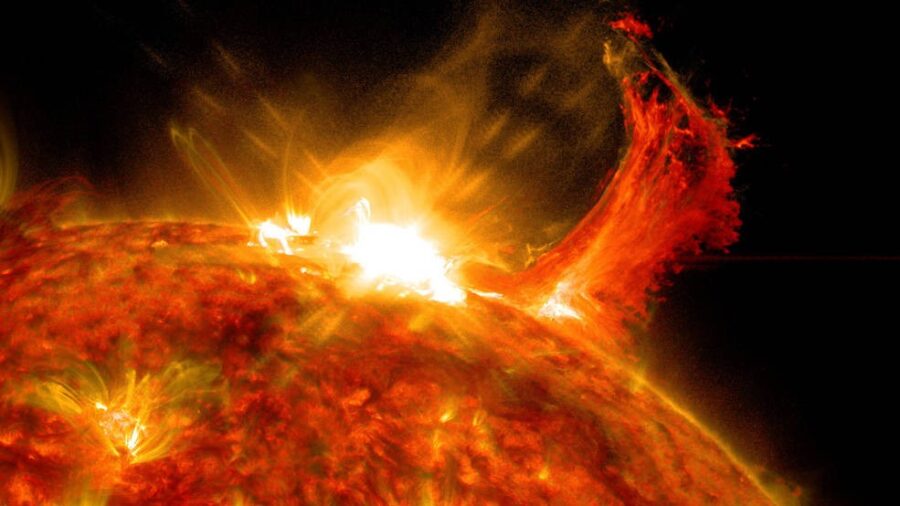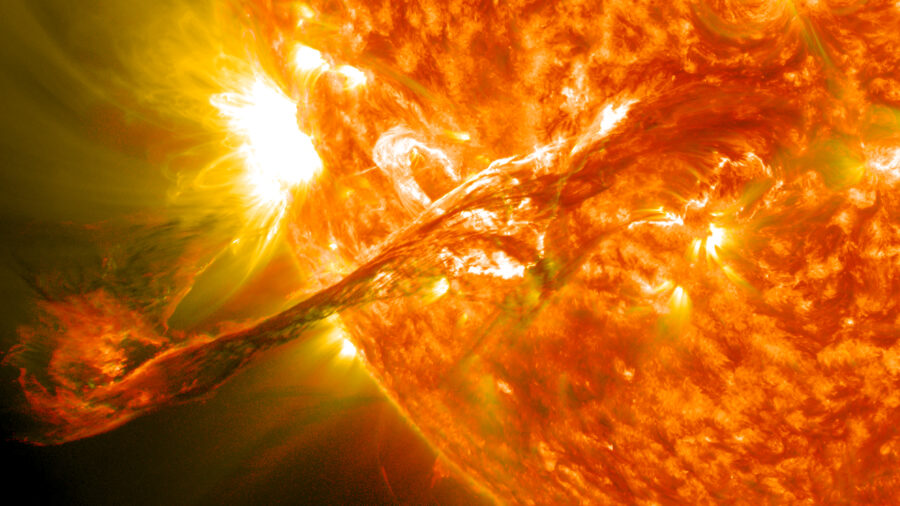Ultra Hot Tidal Waves Bigger Than The Sun Are Crashing On Another Star

If you think a heat wave on Earth is bad, just be glad that you are not on a star being hit by an ultra-hot tidal wave, because that’s what’s currently happening somewhere in outer space. Astronomers have discovered that a distant star is giving off tidal waves that are taller than our Sun, according to Science Alert.
The Sun’s increased activity is nothing compared to that found in a distant star system, with tidal waves 35 times the mass of the Sun.
The distant star that is producing massive tidal waves is in the star system MACHO 80.7443.1718. The system got its name in the 1990s after it was found by the MACHO Project, an observational search for dark matter in the Milky Way that used gravitational microlensing.
Harvard astrophysicist Morgan MacLeod and his colleague were drawn to the star system because of its brightness, like moths to a flame. The brightness of the system fluctuates as its two stars orbit each other and pulse in a rhythm similar to a heartbeat, giving them the nickname ‘heartbeat star.’ While most stars sit at .1 percent brightness, this star swings all the way up to 20 percent, giving our solar system quite a show.
MACHO 80.7443.1718 is made up of two stars, with the larger one creating the ultra-hot tidal waves that rock the smaller one. The larger star is about 35 times the mass of our Sun, just to give you some comparison.
The waves, which are 35 times the mass of our Sun, roll across the big star before crashing into the smaller star. The height of these waves is hard to wrap your head around because they can reach a height of 2.7 million miles (4.3 million kilometers), which is taller than three Suns stacked on top of one another.
MACHO 80.7443.1718 is made up of two stars, with the larger one creating the ultra-hot tidal waves that rock the smaller one
As the tidal waves rise and fall over the smaller star, they sometimes completely engulf the star in its heat. The researchers even created a video simulation to try and understand how the smaller star gets wrapped up in the tidal wave. It is fascinating yet terrifying knowing that the energy from just one wave has the ability to completely destroy our planet hundreds of times over.

The energy between the two stars and the tidal waves is similar to how the moon affects ocean tides on Earth. The bigger the push and pull of gravity there is between the two stars, the bigger the waves become.
Researchers are now studying the star system and its tidal waves to better understand why they are happening and if there is anything similar happening elsewhere in space. This is the first time researchers have seen this happening, and they have given another nickname to the ‘heartbeat star,’ the ‘heartbreak star.’ The name comes from the way the waves are breaking on the star, in addition to its pulsing brightness.
Gravity flucations between the two stars could be triggering the enourmous tidal waves, similar to how the moon impacts tidal activity on Earth.
As researchers continue their search for more heartbreak stars causing tidal waves in outer space, please remember to wear sunscreen when you go out in the heat. While being hit with a wave that’s three times the size of our Sun would hurt, a sunburn is also never fun.











